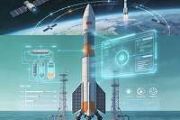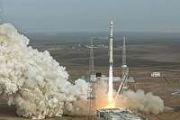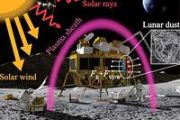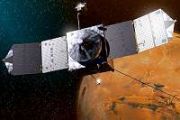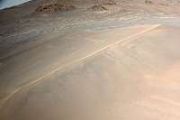
Copernical Team
Cerberus Fossae Identified as Primary Source of Marsquakes
 The Mars InSight mission, since its inception, has shed light on the seismic vibrancy of the Red Planet. The mission's deployment of a seismic station has led to the recording of 98 low-frequency seismic events. Despite the challenges posed by the singular nature of the data collection point and the often ambiguous seismic signals, a significant stride in martian seismology has been made, pinpoi
The Mars InSight mission, since its inception, has shed light on the seismic vibrancy of the Red Planet. The mission's deployment of a seismic station has led to the recording of 98 low-frequency seismic events. Despite the challenges posed by the singular nature of the data collection point and the often ambiguous seismic signals, a significant stride in martian seismology has been made, pinpoi Leidos Enhances ISS Capabilities with New xPWD Water System
 Leidos (NYSE:LDOS), a renowned leader in science and technology, has reached a significant milestone by deploying its innovative Exploration Potable Water Dispenser (xPWD) to the International Space Station (ISS). This deployment marks a substantial achievement in the domain of space exploration technology, providing astronauts with an advanced system for accessing potable water-a vital resource
Leidos (NYSE:LDOS), a renowned leader in science and technology, has reached a significant milestone by deploying its innovative Exploration Potable Water Dispenser (xPWD) to the International Space Station (ISS). This deployment marks a substantial achievement in the domain of space exploration technology, providing astronauts with an advanced system for accessing potable water-a vital resource NSF funds annual solicitation seeking physical science research leveraging the ISS National Lab
 For the ninth consecutive year, the U.S. National Science Foundation (NSF) is funding a solicitation that seeks proposals leveraging the International Space Station (ISS) National Laboratory for research in the physical science area of transport phenomena.
NSF will provide up to $3.6 million for multiple projects to utilize the space station for fundamental research focused on fluid dynami
For the ninth consecutive year, the U.S. National Science Foundation (NSF) is funding a solicitation that seeks proposals leveraging the International Space Station (ISS) National Laboratory for research in the physical science area of transport phenomena.
NSF will provide up to $3.6 million for multiple projects to utilize the space station for fundamental research focused on fluid dynami NASA seeks students to imagine nuclear powered space missions
 The third Power to Explore Student Challenge from NASA is underway. The writing challenge invites K-12th grade students in the United States to learn about radioisotope power systems, a type of nuclear battery integral to many of NASA's far-reaching space missions, and then write an essay about a new powered mission for the agency.
For more than 60 years, radioisotope power systems have he
The third Power to Explore Student Challenge from NASA is underway. The writing challenge invites K-12th grade students in the United States to learn about radioisotope power systems, a type of nuclear battery integral to many of NASA's far-reaching space missions, and then write an essay about a new powered mission for the agency.
For more than 60 years, radioisotope power systems have he Rocket Lab to Reinforce Market Trust with Electron Reliability Overhaul
 Rocket Lab USA, Inc. (Nasdaq: RKLB) is poised for a robust return to launch operations after an extensive investigation into September's Electron mission anomaly. The upcoming launch window, starting November 28th, not only signifies the company's resilience but also a leap in operational safety, with Japan-based iQPS poised to benefit from the improvements.
The meticulous seven-week revie
Rocket Lab USA, Inc. (Nasdaq: RKLB) is poised for a robust return to launch operations after an extensive investigation into September's Electron mission anomaly. The upcoming launch window, starting November 28th, not only signifies the company's resilience but also a leap in operational safety, with Japan-based iQPS poised to benefit from the improvements.
The meticulous seven-week revie Japanese billionaire's lunar SpaceX voyage postponed
 Japanese billionaire Yusaku Maezawa announced Thursday the postponement of his journey around the Moon on a SpaceX rocket, a voyage that boasts an artist-filled crew.
"We were planning for our lunar orbital mission 'dearMoon' to take place in 2023, but seems like it will take a little longer," Maezawa said.
"We're not sure when the flight will be," the entrepreneur said on X, formerl
Japanese billionaire Yusaku Maezawa announced Thursday the postponement of his journey around the Moon on a SpaceX rocket, a voyage that boasts an artist-filled crew.
"We were planning for our lunar orbital mission 'dearMoon' to take place in 2023, but seems like it will take a little longer," Maezawa said.
"We're not sure when the flight will be," the entrepreneur said on X, formerl X-37B Mission to Test New Space Technologies and Study Radiation on Seeds
 The Department of the Air Force Rapid Capabilities Office, in partnership with the United States Space Force, is gearing up for the launch of the X-37B Orbital Test Vehicle's seventh mission. Scheduled for December 7, 2023, from Kennedy Space Center, Florida, the upcoming mission is set to embark on a series of innovative tests aboard a SpaceX Falcon Heavy rocket, marking the vehicle's first lau
The Department of the Air Force Rapid Capabilities Office, in partnership with the United States Space Force, is gearing up for the launch of the X-37B Orbital Test Vehicle's seventh mission. Scheduled for December 7, 2023, from Kennedy Space Center, Florida, the upcoming mission is set to embark on a series of innovative tests aboard a SpaceX Falcon Heavy rocket, marking the vehicle's first lau Image: Earth through a 2-mm lens
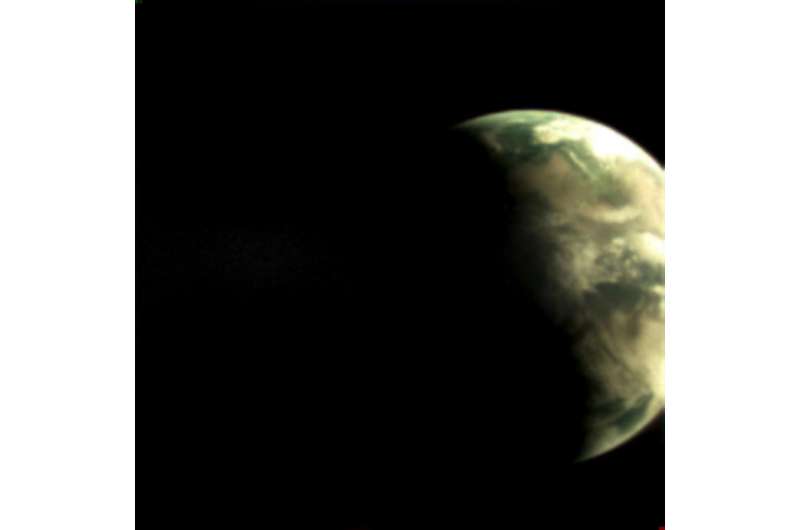
A distant, partly shadowed Earth, as viewed from a 6,000-km-altitude orbit. This unusual image was acquired using an extremely miniaturized camera about the size of the edge of a 20 cent coin—a miniscule technology experiment aboard ESA's shoebox-sized TRISAT-R CubeSat.
TRISAT-R project manager Iztok Kramberger of the University of Maribor explains: "This tiny camera measuring less than two cubic millimeters in size took a picture of an object measuring approximately one trillion cubic kilometers—our beautiful planet Earth—from thousands of kilometers away."
A CubeSat made from three standardized 10-cm boxes, TRISAT-R is Slovenia's second space mission, which flew on Europe's inaugural Vega-C launch last year to the relatively inhospitable environment of medium-Earth orbit, at 6000 km up. The mission's orbital path takes it right through the heart of the ionosphere—an electrically active layer of Earth's atmosphere—as well as the inner Van Allen radiation belt.
This allows TRISAT-R to test a suite of radiation-detection payloads. In addition, the TRISAT-R team embarked a pair of tiny cameras, with lenses made from clear borosilicate glass to provide limited radiation resistance, mounted directly onto 320x320 pixel image sensors.
Over the past six years, governments proposed launching more than 1 million satellites, but where will they all go?
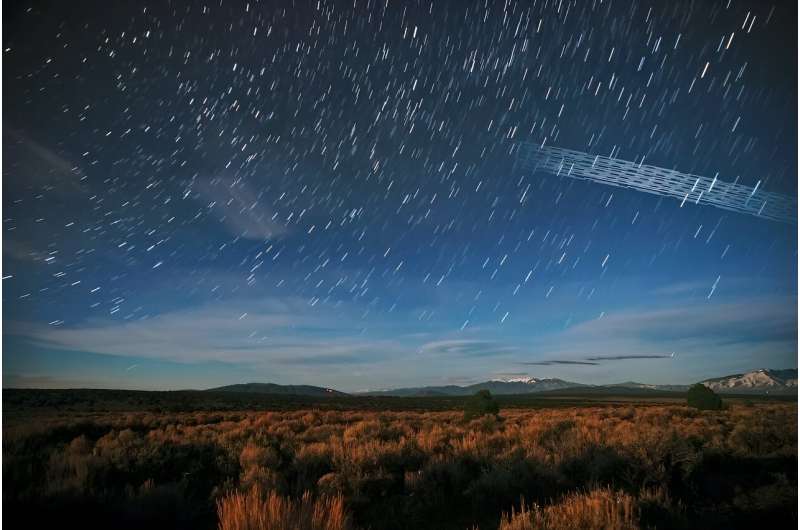
In September 2021, Rwanda announced that it was planning to launch over 300,000 satellites. Three months later, a Canadian company, having previously launched two dozen CubeSats, said it would launch an additional 100,000. Then, a French company did likewise. And SpaceX, which has already launched around 5,000 satellites, now has plans for over 60,000 more.
There are currently only about 8,000 active satellites in orbit. What's going on?
Before a satellite is launched, a nation state must file its proposed satellite system with the International Telecommunication Union (ITU) to coordinate radiofrequency spectrum on behalf of the satellite operator, which could be a company, university or government agency.
These filings are made years ahead of the satellite launch, so the ITU can oversee coordination between different satellite operators and ensure that new satellite signals don't drown existing ones out.
Boom in space tourism threatens to boost the amounts of space junk and climate emissions
Commercial companies are increasingly becoming involved in transporting astronauts to the International Space Station (ISS), as well as other activities in orbit. Some, such as Houston-based Axiom Space, eventually want to build their own space stations in orbit, where commercial astronauts could make extended stays.
This could also provide more money and opportunities for science to be carried out in low Earth orbit. But it also raises a host of safety concerns, because it will add to the already troublesome issue of space junk. There are also implications for the environment, because rockets produce greenhouse gas emissions that contribute to climate change.
Axiom, which was founded in 2016, was the first company to conduct privately funded missions to the ISS. Under Axiom's Space Access Program, it has been offering different countries the opportunity to design customized missions to orbit aboard SpaceX's Crew Dragon spacecraft. As such, it recently signed an agreement with the UK Space Agency for an all-UK astronaut mission to the ISS.




